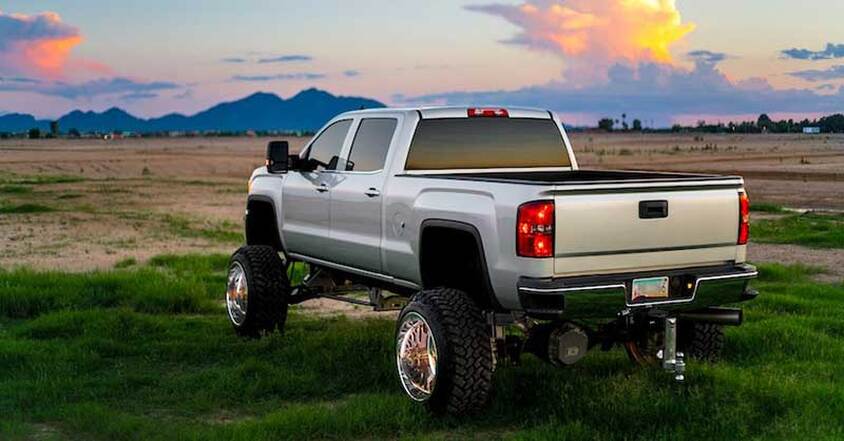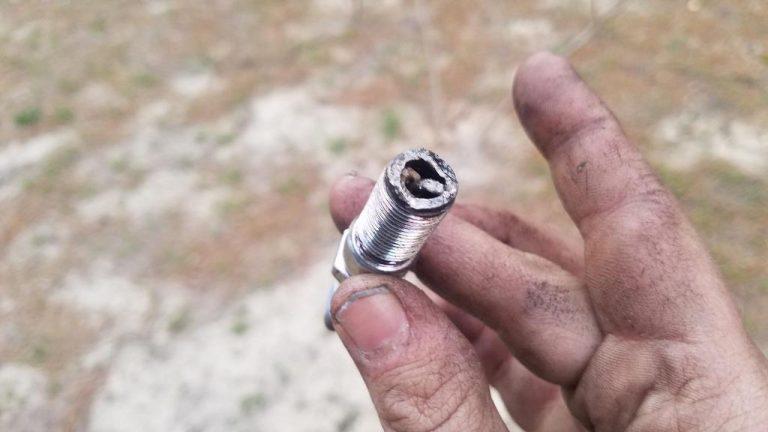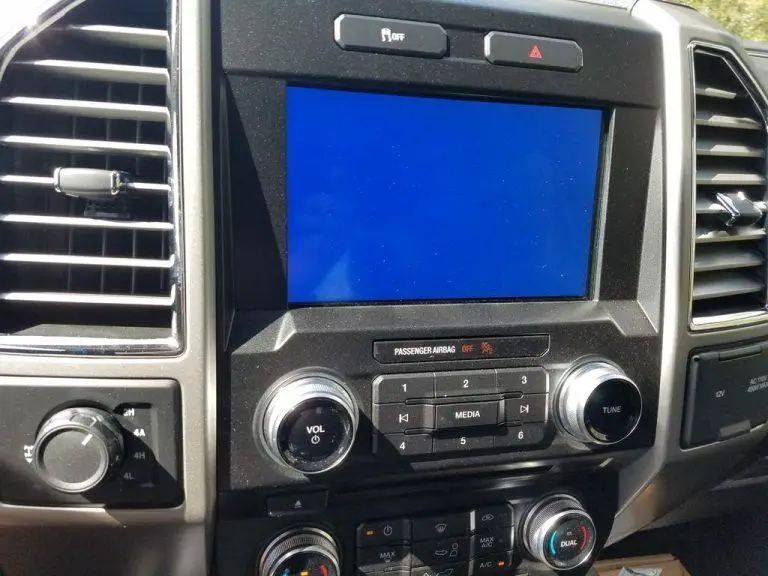Will Bigger Tires Raise My Truck?: Boosting Height and Performance
Yes, bigger tires will raise your truck. The increase in height depends on the tire size.
Upgrading to larger tires is a popular modification among truck enthusiasts. Bigger tires not only enhance the vehicle’s appearance but also improve off-road capabilities. This adjustment often leads to better ground clearance, allowing the truck to tackle rough terrains more effectively.
However, the increase in height can affect your truck’s handling and fuel efficiency. It’s essential to consider these factors and ensure that the larger tires fit without causing issues. Proper alignment and potential suspension adjustments may be necessary. Always consult with a professional before making significant modifications to your vehicle. This ensures safety and optimal performance while enjoying the benefits of bigger tires.
Introduction To Bigger Tires
Upgrading your truck’s tires to a larger size can seem appealing. Bigger tires often provide a rugged look and promise better off-road performance. But what are the actual impacts on your truck?
Benefits And Drawbacks
Bigger tires come with several benefits and some drawbacks. Understanding both helps you make an informed decision.
| Benefits | Drawbacks |
|---|---|
|
|
Common Misconceptions
There are several common misconceptions about upgrading to larger tires. Let’s clear up a few.
-
Myth: Bigger tires always improve fuel efficiency.
Fact: Larger tires can actually reduce fuel efficiency. -
Myth: Bigger tires never affect the speedometer.
Fact: Larger tires can cause speedometer inaccuracies. -
Myth: Any truck can handle bigger tires without modifications.
Fact: Some trucks may need suspension adjustments.
Impact On Vehicle Height
Upgrading to bigger tires can change your truck’s height. This affects its look and feel. It also changes performance and stability. Understanding how tire size affects height is crucial.
How Tire Size Affects Height
Bigger tires increase the overall diameter of the tire. This lifts the truck higher off the ground. The height increase depends on the tire size difference. More significant changes result in more height.
Comparing Different Tire Sizes
| Tire Size | Height Increase |
|---|---|
| 31 inches | 1 inch |
| 33 inches | 2 inches |
| 35 inches | 3 inches |
| 37 inches | 4 inches |
As the table shows, larger tires raise your truck more. This impacts ground clearance and vehicle stability.
Performance Enhancements
Upgrading your truck with bigger tires can boost its performance. The enhancements vary based on the driving conditions and tire type. Let’s explore some key performance improvements.
Improved Off-road Capability
Bigger tires enhance your truck’s off-road abilities. They provide a better grip on uneven surfaces. This is crucial for challenging terrains like mud, sand, and rocks.
Additionally, larger tires increase ground clearance. This reduces the risk of undercarriage damage. Your truck can tackle rough trails more effectively.
| Feature | Benefit |
|---|---|
| Bigger tread patterns | Enhanced traction |
| Increased tire height | Better ground clearance |
Influence On Handling And Stability
Bigger tires can affect your truck’s handling and stability. The changes depend on the tire size and type. Let’s break it down:
- Handling: Larger tires may improve handling on rough roads. They provide more surface contact. This can lead to a smoother drive.
- Stability: Bigger tires can also affect stability. They may increase the center of gravity. This can impact cornering and sharp turns.
Consider these factors before upgrading your tires. It’s important to balance performance with safety.

Credit: www.tireagent.com
Fuel Efficiency Considerations
Many truck owners think about bigger tires for a bold look. But, will bigger tires raise your truck and affect fuel efficiency? Let’s explore how tire size influences fuel consumption and how you can balance performance with efficiency.
Tire Size And Fuel Consumption
Bigger tires often mean increased fuel consumption. Larger tires have a bigger surface area. This increases rolling resistance and makes the engine work harder. The harder the engine works, the more fuel it uses.
Here’s a simple table to show how tire size affects fuel consumption:
| Tire Size | Fuel Consumption (mpg) |
|---|---|
| Standard | 20 mpg |
| Medium | 18 mpg |
| Large | 15 mpg |
As shown, larger tires can reduce fuel efficiency significantly.
Balancing Performance And Efficiency
Balancing performance and fuel efficiency is key. While bigger tires offer better off-road performance, they can hurt fuel economy. So, how do you find the right balance?
- Choose all-terrain tires: These offer a balance between off-road capability and fuel efficiency.
- Regular tire maintenance: Properly inflated tires can improve fuel efficiency.
- Consider your driving needs: If you drive mostly on highways, smaller tires might be better.
By following these tips, you can enjoy both better performance and good fuel efficiency.
Choosing The Right Tires
Choosing the right tires for your truck can be exciting. Tires affect your truck’s performance, appearance, and ride quality. This section helps you pick the best tires for your truck’s needs.
Factors To Consider
Before selecting new tires, consider these key factors:
- Truck Usage: Think about how you use your truck. Is it for off-roading, daily commuting, or heavy towing?
- Tire Size: Larger tires can raise your truck. But ensure they fit your vehicle without causing issues.
- Terrain: Different tires suit different terrains. Choose tires that match the roads or trails you drive on.
- Budget: Tire prices vary widely. Set a budget to narrow down your options.
- Weather Conditions: Select tires that perform well in your area’s weather conditions, whether it’s snowy, rainy, or dry.
Popular Tire Options
Here are some popular tire options for various needs:
| Tire Type | Best For | Key Features |
|---|---|---|
| All-Terrain Tires | Mixed use | Good for off-road and highway driving |
| Mud-Terrain Tires | Off-roading | Excellent traction in mud and rough terrain |
| Highway Tires | On-road driving | Smooth ride and fuel efficiency |
| Winter Tires | Snowy and icy roads | Enhanced grip in cold conditions |
Choosing the right tires ensures your truck performs well. Consider your needs and the above factors to make the best choice.

Credit: www.carid.com
Installation And Maintenance
Installing bigger tires on your truck can enhance its performance and appearance. Proper installation and regular maintenance are crucial for safety and longevity.
Proper Installation Techniques
Installing bigger tires requires precision. Ensure you have the right tools and follow the steps meticulously.
- Lift the Truck: Use a jack to lift the truck safely.
- Remove Old Tires: Unscrew the lug nuts and remove the existing tires.
- Check Wheel Alignment: Make sure the alignment matches the new tire size.
- Fit New Tires: Place the new tires on the wheel hub and tighten the lug nuts.
- Lower the Truck: Carefully lower the truck back to the ground.
Ensure the tires are balanced and aligned. This prevents uneven wear and tear.
Routine Maintenance Tips
Maintaining bigger tires involves regular checks and timely interventions. Here are some tips:
- Check Tire Pressure: Ensure the pressure is within the recommended range.
- Inspect Tread Depth: Use a tread depth gauge to check for wear.
- Rotate Tires: Rotate the tires every 5,000 to 7,000 miles.
- Alignment Checks: Regularly check wheel alignment to prevent uneven wear.
- Clean Tires: Remove dirt and debris to maintain traction and appearance.
Follow these tips to keep your bigger tires in top shape. Proper maintenance ensures safety and extends the life of your tires.
Legal And Safety Implications
Installing bigger tires on your truck can change its look and performance. But before making this modification, consider the legal and safety implications. These factors can greatly affect your driving experience and compliance with the law.
Regulations And Compliance
Different regions have laws about vehicle modifications. You need to check these regulations before installing bigger tires. Failing to comply with these laws can result in fines or penalties.
Some areas have specific rules about tire size. These rules ensure that your truck remains safe and roadworthy. It’s important to follow these guidelines to avoid legal issues.
Consult your local Department of Motor Vehicles (DMV) or equivalent authority. They provide information on allowed modifications. This will help you stay within the legal limits and avoid any trouble.
Ensuring Safe Driving
Installing bigger tires affects your truck’s handling. Larger tires can change the way your vehicle steers and brakes. This can pose safety risks if not properly managed.
Check your truck’s owner’s manual for recommendations on tire size. The manufacturer provides these guidelines to ensure safe operation. Ignoring these recommendations can lead to accidents or damage.
Consider upgrading other parts of your truck, such as the suspension or brakes. These upgrades can help manage the changes caused by bigger tires. This ensures that your truck remains safe to drive.
Regularly inspect your tires for wear and tear. Bigger tires may wear differently compared to standard sizes. Keeping an eye on their condition can help you maintain safe driving practices.
| Legal Checkpoints | Importance |
|---|---|
| Consult Local DMV | Ensure compliance with local laws |
| Follow Manufacturer Guidelines | Maintain vehicle safety |
| Regular Tire Inspection | Prevent accidents due to tire wear |
Summary:
- Check local laws before installing bigger tires.
- Follow manufacturer guidelines for safe operation.
- Inspect your tires regularly to avoid safety issues.
Cost Implications
Installing bigger tires on your truck can change many things. One of the most important factors to consider is the cost. Let’s break down the cost implications into two main categories.
Initial Investment
The initial investment includes the cost of the tires themselves. Bigger tires generally cost more than smaller ones. You might also need new rims, which can add to the cost. Here’s a simple table to illustrate:
| Item | Estimated Cost |
|---|---|
| Bigger Tires | $400 – $1,200 |
| New Rims | $300 – $800 |
| Installation | $100 – $200 |
These costs can add up quickly. It’s crucial to budget for these initial expenses before making a decision.
Long-term Costs
Long-term costs are equally important. Bigger tires can affect your truck’s fuel efficiency. They can also wear out faster, leading to more frequent replacements. Here are some potential long-term expenses:
- Increased fuel consumption
- More frequent tire replacements
- Potential suspension adjustments
Using bigger tires might also impact your truck’s warranty. Make sure to check the warranty details to avoid unexpected costs. Long-term expenses can sometimes outweigh the benefits of installing bigger tires.

Credit: www.schultzdieselsports.com
Frequently Asked Questions
Do Bigger Tires Increase Height?
Yes, bigger tires can increase a vehicle’s height. They raise both the chassis and the overall ground clearance.
What Will Happen If I Put Bigger Tires On My Truck?
Bigger tires can improve off-road capability and ground clearance. They may affect speedometer accuracy, fuel efficiency, and handling.
Will 35 Inch Tires Make My Truck Higher?
Yes, 35-inch tires will make your truck higher. They increase ground clearance and elevate the overall height.
Can I Put Bigger Tires On My Truck Without A Lift?
Yes, you can put bigger tires on your truck without a lift. Check for enough clearance to avoid rubbing.
Conclusion
Bigger tires can definitely raise your truck, offering better ground clearance and a more aggressive look. Consider the impact on handling, fuel efficiency, and cost. Always consult a professional before making changes. This ensures safety and optimal performance. Make an informed decision for the best results and a satisfying driving experience.






